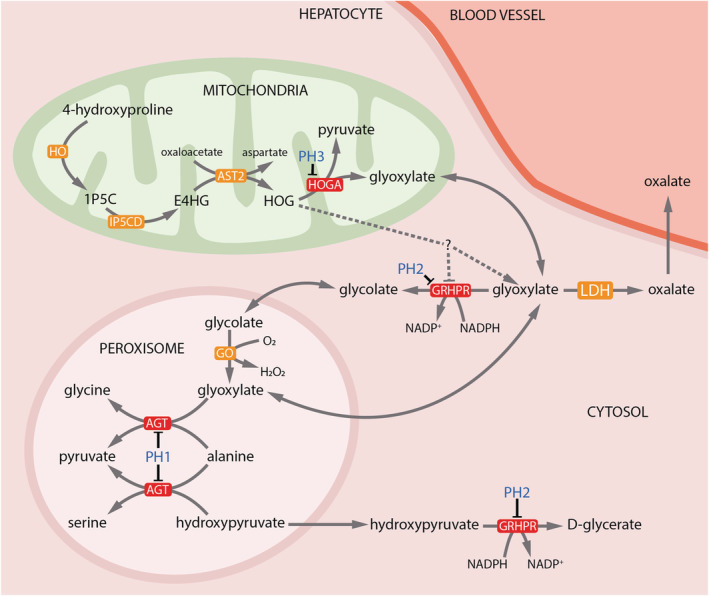FIGURE 2.

Hepatic metabolism of oxalate. Metabolic pathways involved in oxalate metabolism depicting the enzymes defective in the 3 major types of primary hyperoxaluria (red boxes and blue text). LDH catalyses the final step in the production of oxalate from glyoxalate for all PH types. The precise mechanisms by which HOGA mutations lead to increased oxalate production are not fully understood (depicted by dotted lines). Hypotheses include inhibition of GRHPR by accumulated HOG and metabolism of HOG in the cytoplasm to glyoxylate by an unidentified aldolase enzyme. 1P5C: 1‐pyrroline‐3‐hydroxy‐5‐carboxylate; E4HG: erythrohydroxyglutamate; HOG: 4‐hydroxy‐2‐oxoglutarate; PH: primary hyperoxaluria; AGXT: alanine glyoxylate aminotransferase; GRHPR: glyoxylate reductase/hydroxypyruvate reductase; HOGA1: hydroxyl‐oxoglutarate aldolase 1; LDH: lactate dehydrogenase
